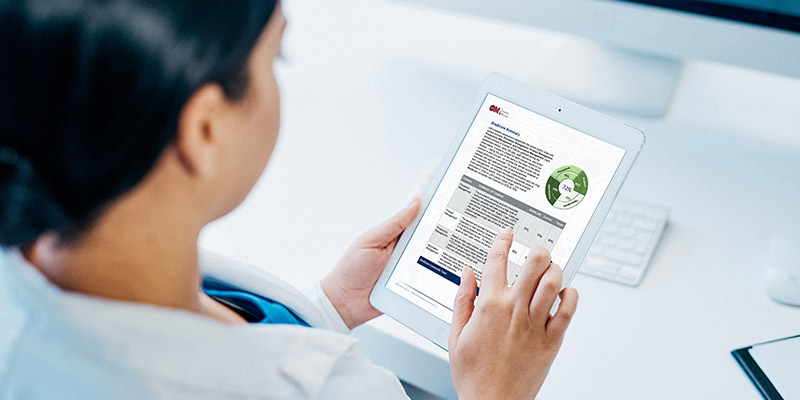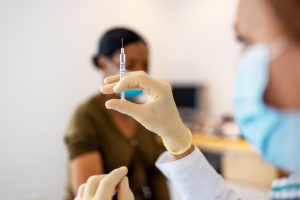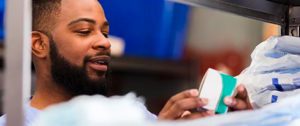Operating room departments often face challenges related to operational inefficiencies, lack of visibility to cost and inventories, and discarded products due to expiration or changing practice.
Owens & Minor’s SurgiTrack is designed to combat these potential pitfalls by delivering ready-to-use custom surgery packs right to your facility based on procedure and physician preference. One of the unique aspects of SurgiTrack is OneScore, a powerful diagnostic tool that measures a hospital’s performance in the perioperative space. Ned James recently sat down with John Raab, Director of Perioperative Program Development & Performance Delivery at Owens & Minor to talk about OneScoreTM and how it can help transform a hospital’s perioperative supply chain.
James: John, thanks for taking the time to talk with me. Before we take a deep dive into SurgiTrack’s OneScore, let’s start with the basics. What exactly is OneScore?
Raab: I’m glad to be here, Ned. OneScore is a number from zero to 100 that tells a hospital how their perioperative space is performing. Think of it as a score or grade of how efficient a hospital is running their perioperative area.
James: A score or grade is usually based on something, such as points scored or how many questions you answered correctly. What is OneScore based on?
Raab: OneScore is a unique analysis Owens & Minor conducts based on over 250 different metrics we collect at the hospital. These metrics are then rolled up into one of four categories: Procedure Management, Product Management, Productivity Management and Information Management. We then combine the category scores into an overall performance score which we call OneScore.
James: What are some of the things you measure in each of those categories
Raab: Ned, each category is different. For instance, under procedure management we measure things like product variability between surgeon and product consumption. Under product management we baseline a customer’s product purchases to case volume, and their product replenishment practices. Under productivity management we consider the ratio of clinical to nonclinical staff involved with basic case assembly, and the volume of product handled each day. Under information management we look how you use data to make business decisions.
James: And each one of those gets a score, which rolls up into the category score which then rolls up into the OneScore.
Raab: You got it.
James: John, this seems pretty sophisticated. Is this model based on something?
Raab: OneScore is definitely more than your typical internal tracking. It actually uses a process called composite scoring, which you’ll find in a lot of different industries, but not very often in the medical field.
James: Can you explain a little bit more about composite scoring?
Raab: Sure. I don’t want to get to deep into the weeds of statistics, but composite scoring involves taking a combination of multiple metrics to create a single score or data point. A good example is your credit score. Your credit score is really based on a number of metrics, everything from how much debt you’re carrying to how much you’re paying off each month. Those metrics are then combined to create your credit score. OneScore works the same way.

James: Why did O&M develop OneScore?
Raab: I’ve worked with a lot of hospitals over the years and have found that they are typically very good at measuring unique factors related to their performance, whether it’s clinical or business performance. But what we realized is that those measurements were always a single metric measuring a single factor. Hospitals were missing a way to aggregate those metrics into a single score, so staff can quickly see how they are performing across a range of factors. We developed OneScore as a way of providing that single score.
James: So instead of spending time analyzing all those unique metrics a hospital has for their perioperative space, and never really seeing the big picture of how they are doing overall, a hospital can quickly use the OneScore to see that big picture.
Raab: Exactly. With OneScore, a hospital can quickly see how they are doing overall in the perioperative space. And if they want more color to the total score, they can drill down into each of the scores of the four categories and then the scores of the metrics that make up that category to get more granular on the data.
James: It sounds like a data expert would be in heaven with OneScore.
Raab: I hadn’t really thought about it that way, but I think you’re right.
Key OneScore Benefits
- Driving efficiency by connecting product purchases and procedure volume and complexity
- Reducing cost by comparing collective labor pool with necessary and redundant activities
- Informing strategic decisions with a projection of consumption in current product bundles
- A targeted estimate to improve consumption, and product standardization resulting in a reduction in a procedure cost
James: When is a OneScore conducted and is it done more than once at a hospital?
Raab: It’s usually conducted before a customer goes live with SurgiTrack. We gather statistics and perform interviews and all that goes into the OneScore, which becomes the baseline for measuring progress going forward.
James: So OneScore tells a hospital how they are doing in the perioperative space. Is that it or do you work with the hospital on improving their score?
Raab: Ned, that’s a great question. We just don’t provide the OneScore and walk away from the hospital never to be heard from again. The initial OneScore is the start, not the end of the process. We provide a detailed implementation plan to the hospital that helps them move toward their goal. Actually we saw a recent example of the OneScore in action with a hospital customer in the South. They were able to improve their OneScore from the high 30s to the low 70s. At the same time, they were able to drive their cost per procedure from $1,164 to $731 using O&M’s SurgiTrack. That’s a fantastic transformation.
James: What happens after O&M determines the OneScore?
Raab: The OneScore is an important tool, but it’s really just the beginning. Once we have the baseline score, we compare that score to the goal we established with the hospital. Then, working together with that plan, we can take action. At the end of the day, the OneScore lets us measure which steps improve processes and streamline activities, which can then lead to larger successes like increased staff satisfaction, increased patient safety, and increased cost savings. And you can see all of those improvements reflected in real time with the OneScore results.
James: Is anyone else doing something similar to the OneScore?
Raab: I’m not really aware of other companies or hospitals doing something like OneScore. There are a lot of companies and consultants that provide a lot of data to hospitals to help them improve performance. And as I mentioned before, hospitals have historically collected a lot of data to measure performance. But none of them take that data and roll it up into a single metric like OneScore does.
James: John, thanks so much for talking with me today about Owens & Minor’s OneScore.
Raab: Ned, it’s been my pleasure.

John Raab, Director of Peri-Operative Program Development & Performance Delivery
John has over 30 years of experience in Perioperative Services and is the original architect of the SurgiTrack program. Since coming to Owens & Minor in 2000, he has been responsible for advancing the periop program development and leading a team of Clinical and Supply Chain SME’s, under the O&M S.E.A.L Team banner.
SurgiTrack
OneScore is an assessment tool for Owens & Minor’s SurgiTrack, a program that delivers custom surgical procedure kitting, logistics and data analytics. To learn more about how SurgiTrack and OneScore can you help you, simply fill out the form.

















